-
Posts
3,518 -
Joined
-
Last visited
-
Days Won
27
Content Type
Profiles
Forums
Blogs
Gallery
Events
Store
Posts posted by bigjarofwasps
-
-
I happened upon this old photograph recently and thought it might be of interest. The handwriting on the back names the chap as Arthur O'Brien Jones, Divisional Surgeon, Epsom. Police surgeons aren't my normal collecting sphere, but I thought I'd take a chance and see what I could find out about him. It appears that members of the Epsom Historical Society were aware of him and had already conducted considerable research on him. His story is a somewhat sad if not interesting one. Which I thought might be of interest to fellow forum users.....
Arthur O'Brien Jones was born in Stamford, Lincolnshire in 1813 and qualified as a doctor in 1836; he was the only son of the Reverend Thomas Arthur Jones and Elizabeth O'Brien. Having qualified as a doctor he appears to have gone to live in Epsom. He was certainly there in 1841 and acting as Divisional Surgeon to V Division, when he had treated PC 269V Joseph Russell.............
On Saturday 8 May 1841, just before midnight, PC 269V Joseph Russell was on patrol in the High Street when he heard a disturbance at the King's Head inn. On investigation, Charles Fincher was found kicking at the tap-room door. On being told that he could get no more beer, Fincher, a labourer, became abusive, tore the officer's rolled cape from the back of his coat and used it to hit PC Russell in the face. A violent struggle ensued and a number of people emerged from the tap-room to become involved in the fracas.
A drunken George Gardom intervened, shouting: - "You shall not take that man to the station. I'm a gentleman and I'll bail him... You you and you. Come on ten of you and assist me to get this man away." A number of men then assaulted the constable with sticks and their fists.PC Russell drew his truncheon to defend himself and kept hold of Fincher until a colleague, PC Price arrived to assist him.
When giving evidence to the Magistrates, Baron de Teissier and Mr Goss, about the event PC Russell declared that George Edes, James Phipps and John Ratcliffe (the latter two, recruits to 89th Regiment of Foot) had subsequently belaboured him with heavy sticks. "I was knocked down. Ede knelt upon my back, struck me and attempted to kick me in the ribs but kicked my lanthorn. I got up and struck him with my staff very violently, as I thought he intended to do me some serious hurt."
The original police station was situated in the High Street at the eastern end on the south side. As explained in 'The Court House' "From an article in one of the local papers in 1935, it appears that when number 45 High Street, now the ASK restaurant, was being vacated the remains of what appeared to be two cells were discovered. Although the some alterations had been made to the doors, the door bolts were still attached. Each door contained small trap about 6"x8" presumably to allow food to be given to the prisoner." At the time of the 1851 Census these premises were occupied by a Sergeant, his family, 6 constables and a lodger.
The two Police constables escorted their prisoner towards the section-house but only got as far as the (Spread) Eagle tap before Gardom again incited the mob.
George Gardom seized Phipps' stick, struck constable Russell down, and beat him about the head. The officer's leather top hat, then part of police uniform rather than a helmet, was 'cut to pieces'.
Eventually the constables managed to struggle back into the station-house with their prisoner and closed some gates behind them. A hail of stones were hurled after the group and the mob burst open the gates threatening to storm the building. Alerted by all the noise, other officers rushed out to assist their colleagues, beat off the attack and apprehend, additionally, Gardom, Edes, Phipps and Ratcliffe.Although powerfully built, PC Russell had been badly injured and remained dangerously ill when examined by the surgeon-in-chief to the Metropolitan Police and Arthur O'Brien Jones, surgeon to V Division, some days later.
The charges brought were:
Edes - Assaulting and wounding Joseph Russell, PC 269 V, with intent to do him grievous bodily harm;
Phipps and Ratcliffe - Attempting to rescue a prisoner;
Gardom - Assaulting and resisting the police in the execution of their duty;
Fincher - Being drunk and disorderly and assaulting the police.Initially, Gardom and Edes had been bailed for £100 and two sureties of £50 each. At a further hearing, however, the Magistrates remanded all the accused to Kingston gaol to await trial. Gardom's father appealed to the bench, explaining that George was his only son and being sent to prison would break his parents' hearts. His offer to stand bail to the extent of many thousands of pounds for security to ensure his son's appearance was declined.
The outcome of trial at Guildford assize is revealed by the Criminal Registers published on the Ancestry UK website. George Gardom, George Edes, James Phipps and John Ratcliffe were all tried at the Assizes on 29 June 1841. Gardom got 12 months' imprisonment and the others 9 months each. Charles Fincher was not mentioned.
1841 Epsom appears to have been a rowdy place as a similar incident occurred shortly afterwards.....
The Morning Post on Wednesday 25 August 1841. The previous Saturday, 21 August 1841, at ten minutes to midnight, five men left the Bull's Head*, Ewell, "drunk and noisy", before travelling to Epsom. In the town centre, they were encountered by Police Constables 219V Butcher and 217V Duncan Stewart who remonstrated with them. Charles Robinson from Putney flourished a reaping hook [indicating that the men could have been itinerant harvesters] over PC Butcher swearing he would cut off the officer's head. Disarmed by Butcher, Robinson was given into the custody of PC Stewart. George Morrett, of Brentford, then struck Constable Butcher over the head with a heavy stick before kicking him and breaking one of the officer's ribs. A man called Jarrett went to the assistance of the felled constable and both assailants were escorted towards the police-station. On their way to the station house PC Butcher collapsed in the street resulting in him being carried home. Examined by the divisional surgeon, Mr Jones, his injuries were declared to be of a most serious character. On Monday, 23 August 1841, the men appeared before local magistrates, Baron de Tessier & Captain Gough [Henry Gosse, Lord of the Manor of Chessington?]: after a surgeon's certificate had been produced testifying that PC Butcher remained in imminent danger the prisoners were remanded until Friday 3 September 1841. Details of their trial have not been traced.
In the 1851 census Arthur was already practising and living in South Street, Epsom with two of his sisters, Jemima and Anne, and three of Ellen's children were also in residence (it seems that Ellen's husband, coal merchant Arthur Burton, had gone to Paris in 1848 to escape his creditors and he set up in business there). Jemima married Australia merchant Joseph Matthew Holworthy in 1852 and Anne never married, eventually returning to Bromley College.
Arthur O'Brien Jones marries Sibella Vernon/Farish at Epsom on 22 August 1857 and they live at The Shrubbery in South Street. They have just one child, Arthur Vernon Jones, born in Epsom on 16 June 1859, who was educated at Eton. Sadly, the boy died of consumption at the age of 19, on 8 September 1878, at the mountain resort of Davos Platz, Grisons in Switzerland.
Dr O'Brien Jones was again in the papers in 1877 following a civil case that was brought against him and the head master of a local school following the death of a child, whom the Doctor had treated. It subsequently transpired that there was no case to answer by either party. But one can only imagine the local scandal.
Finally on the 1st May 1889 Dr Obrien Jones commits suicide by consuming hydrogen cyanide.............
Wednesday, 1 May 1889, having committed suicide. A piece of paper was found, on which he had written 'Taken prussic acid'. The inquest was held at Epsom on 10 May 1889 and reported in The Surrey Mirror next day. Sibella's evidence was taken at her house; she had returned home at about 5pm on 1 May and found Arthur in a chair, evidently dying. 'He tried to open his eyes, but he could not speak. I left home at eleven in the morning, and I then noticed nothing particular in him. He had been very cheerful and happy lately. Nothing had happened to disturb him in any way. His age had incapacitated him from doing so much work and this might have preyed upon his mind.'Dr George Robinson Barnes, said, 'I was formerly in partnership with the deceased, but during the last six years we had only a working agreement. I last saw him alive on Monday afternoon about two o'clock. He was in a good state of health and did not appear depressed. On Wednesday I was sent for to see him, and on my arrival found he was dead. The prussic acid bottle was by his side and a glass measure was standing on the table. I detected a strong smell of acid. The cause of death was poisoning from prussic acid. I know nothing which would cause the deceased to commit suicide. I was not aware of any financial difficulties. His practice had declined. He had outlived his old patients and a new generation had come into Epsom. I think this feeling of not being able to do much worried him considerably. He had not, through his declining years, been equal to his work, particularly his night practice'Newspapers recorded, 7 May 1889,
"A Supposed Suicide. A painful sensation has been caused at Epsom by the death of Mr Arthur O'Brien Jones, surgeon to the Metropolitan Police, Epsom Division. He was found on Wednesday night lying dead in his room with a phial of prussic acid by his side and also, it is said, a statement written by himself. Mr Jones had spent over 50 years in Epsom, being about 76 years of age. He was surgeon for several public institutions and though of somewhat eccentric character was much esteemed. No reason has been forthcoming to explain this event."
Sources -
https://www.geni.com/people/Dr-Arthur-O-Brien-Jones/6000000047732722825
http://www.epsomandewellhistoryexplorer.org.uk/RiotousEpsom.html
http://www.epsomandewellhistoryexplorer.org.uk/Shrubbery.html
http://www.epsomandewellhistoryexplorer.org.uk/SibellaJones.html
http://www.epsomandewellhistoryexplorer.org.uk/DeathAtEpsomCollege.html
http://livesonline.rcseng.ac.uk/biogs/E002373b.htm
0 -
On 9/7/2017 at 20:06, QSAMIKE said:
I have a number of medals issued to men from the founding of the unit right up until the end of the Boer War and they are all named S.A.C., including one where the man did not get his medal till 1910 .
Mike
Something that I've always found curious about the South African Constabulary is why the used the rank Trooper and not Constable? I think I'm right in thinking that they were formed as a police force to take over from the army once the war was won (and it was assumed the war would be over quickly). When this wasn't the case, their role changed to a para-military outfit. Which I assume is where the rank Trooper comes from. When the unit was first founded did they use the rank Constable?
Are any medal groups know to exist, whereby a British bobby left to join the SAC and then returned to his previous role afterwards? Perhaps 1897 Jubilee Medal, Boer War Medal(s) and a 1911 medal perhaps?
0 -
I'd say with a fair element of certainty that this photo was taken in somewhere in Germany.
0 -
Ladies/Gents,
Can anyone tell me what medals these officers are wearing? I can make out the Golden & Diamond Jubilee Medals, but what's the black and yellow looking ribbon? Also the tall chap in the middle on the top picture appears to be wearing a Police LSGC, am I right in thinking that the RGP are awarded the same LSGC as British main land police get? Whatever the black and yellow medal is the chap third from the right appears to have a clasp on his medal?
On the bottom picture the chap seated has four medals, one of which appears to be the Golden Jubilee Medal, but what are the others? The first one appears to be the Colonial Medal, do the RGP get this medal instead of the QPM? Most of these chaps appear to have more medals than the average UK bobby gets am I missing out on a collecting sphere here?

 0
0 -
8 hours ago, Deelibob said:
BJOW,
Many thanks for the information.
Regards
Peter
No problem, sorry I couldn't tell you any more.
However, this might be of interest..............
Case refers to a WILLIAM PIPER (Policeman E 243), which I suspect is your chap........
0 -
He appears to have joined before 1879.
0 -
Couldn't find Sgt West so he must have joined before 1879.
Const Henry Richards warrant number 68514, joined on the 06.08.1883 and retired on the 23.10.1907, having spent his entire service in A Division.
Might be worth putting their names into the Old Bailey website, you might turn something up there......
0 -
23 hours ago, Alan Baird said:
Hi,
I totally agree with you that during the height of the JTR murders, there would have probably been hundreds of suspects taken to the Police Stations each week. The majority of these would have been cleared and released quite quickly but you would think that there would be a mass of information relating to these incidents and the Police Officers involved but that is not the case.
Ebay has its advantages but it also has many disadvantages, prices go from good to outrageous. Often there are better deals to be had by going directly to dealers shops and auctions etc.
H or Whitechapel division medals relating to 1888 are extremely difficult to find but it can also be rewarding collecting from another famous period in H or Whitechapel division history. For example the ''Siege of Sidney Street in 1911.'' That whole period of the Tottingham Outrage and Sidney Street shows great courage by the officers that dealt with the incidents. There is greater scope in finding interesting items, as these are less well known incidents nowadays.
Alan.
Alan,
I couldn't agree more. Have PM'd you.
Regards, Gordon.
0 -
1 hour ago, Alan Baird said:
Hello,
This is my first posting on the club forum. I also watched the auction of PC W Saundery's medals and did some basic research on him. William Henry Saundery - dark hair, grey eyes, a fresh complexion, five feet ten and a half inches tall and had a slightly deformed left hand.
PC H471 William Saundery was 1 of only 42 Police Constables that were permanently transferred to H or Whitechapel division during the infamous Jack the Ripper murders. That is 42 out of a total of 11,000-12,000 Police personnel. It should be remembered that the majority of the Police Officers serving with H division, during this specific period, have not been identified. All good stories should be evidenced and that is done by Police Order 31/10/1888. PC H471 William Saundery served with H division until the 7th of February in 1890 which was also an interesting period because you have various murder scares where it was feared JTR had returned.
8/2/1890 joined A Whitehall division. 26/8/1890 joined E or Holborn division. 27/12/1893 joined Y Highgate division. Retired from the Met. and Y division on the 4/3/1912 and all evidenced by his Met. Police pension records etc.
Saundery is an unusual surname and there is also a good deal of information on his family life.
PC H471 William Saundery's story and medals are extremely interesting and have the potential for researching in many ways. In many years of collecting I have never seen any of these particular Police Constables medals come onto the market and I suspect it will be many years again before we see a similar event.
One last thought - this particular sale was accidentally done very badly, the listing title of the auction gave the wrong Police officers details and this error may have even resulted in many collectors missing the importance of these medals and also the start of the Summer holidays is never a good time to sell. The market value is what collectors and dealers are willing to pay and whenever you have a good story, then you are likely to be able to command a good price. Well that is my opinion and I thought I would share it with you all.
Hi Alan,
Welcome to the forum, VERY enligtening first thread!!!
A classic example of why medals don't need to be named to H Division to have a H Division connection. I have several in my collection that fall into this catagory, but unfortunatley for me, there were all too early it have a "Ripper" connection, tenuous as that might have been. The nearest I've got is a J Division chap, he joined just before Jack and was st Bethnal Green Station most of his career, certainly during and long after Jack.
It should be noted that the 42 officers were deployed for plain clothes duties, there were loads (several hundred I understand) that where posted there for uniform patrols, during the "Ripper" period. Sadly these are not as well documented, but if you happened across one documented in police orders, you'd have struck gold, I would think.
What I always find interesting is the fact that so many officers H Division or otherwise were in Whitechapel at the time, yet so few of them have a documented "Ripper" connection. Although I'm sure they all have a tale to tell.
Re the auction itself, I agree. This coupled with the fact that the seller clearly didn't know what he had. The most expensive H Division medal I've seen sell was a 1887 example, that went for £500 on Ebay, again no "Ripper" connection at all other than he was in H Division at the right time. MADNESS in my opinion. I'd liken it to any 1st July 1916 medal, they always demand a high premium to, I remember seeing one once on a dealers list, with a silly price. On closer examination, the chaps Regiment wasn't even involved in the Somme attack, he'd just been killed on the 1st of July, on a completely different part of the line, caveat emptor!!!!
0 -
1 hour ago, coldstream said:
The vagaries of Ebay doesn't help, still an outlandish price for such a tenuous link though.
Simon
I agree Simon on both counts!! No doubt he'd have had some tales to tell about being dragged from the comforts of T Division to hunt the Ripper in Whitechapel, but these have long since been lost
 . At most I fear he'd only have been there a couple of months, he certainly isn't named as taking an active part in the case and if it wasn't for one entry in police orders no one would have ever known (certainly no further scope for research that I can see, unless your prepared to trawl through the police courts reports hoping to turn something up). I wonder how much PC LONG's 1887 medal for instance would fetch if that ever came on the market, I dread to think!!!!!!!
0
. At most I fear he'd only have been there a couple of months, he certainly isn't named as taking an active part in the case and if it wasn't for one entry in police orders no one would have ever known (certainly no further scope for research that I can see, unless your prepared to trawl through the police courts reports hoping to turn something up). I wonder how much PC LONG's 1887 medal for instance would fetch if that ever came on the market, I dread to think!!!!!!!
0 -
CASE CLOSED - It appears that I have missed the tenuous "Ripper" connection.
https://www.casebook.org/dissertations/h-division-personnel.html?printer=true
But if I'm honest I wouldn't have paid £310 based purely on him being posted to Whitechapel in October 1888. If he'd have had some sort of documented roll in the case then fair enough. On the other hand the 1911 medal would have been a bargain, which I will kick myself for in due course!!
On a plus note at least 1887/97 Jubilee Medals aren't suddenly demanding high prices, for that at least we can breath a sign of relief
 !!!
0
!!!
0 -
-
Ladies/Gents,
I would very much like to hear other forum users views on the below two medals which sold yesterday on Ebay. The 1911 example, not an exuberant amount (£45) I'm sure you'll agree? But the 1887/97 example £310 is very concerning!! Am I missing something here? PC Saundery appears to have had an unremarkable career, spent in Y Division from 1887 to 1912, he never gave evidence at the Old Bailey (that I can find). So what is it about him that has demanded this premium and why didn't his 1911 medal command the same?
You will note that the listing gives another name, but has been corrected in the item details. Even if if had been the medal to PS Elsworth again nothing overly exciting about this man he served his career in Westham and have evidence at the Old Bailey twice (nothing exciting). Interestingly his medal sold recently on Ebay as well and didn't command this high price?
So Ladies & Gents, what is it I've missed or can I expect to start paying this much for 1887/97 medals from now on?0 -
Since starting this thread, I have come aware that Thomas ARNOLD of H Division fame was a veteran of the Crimean War..
He joined B Division on 19 March 1855 and resigned on 20 September 1855 to fight in the Crimean War. At the end of hostilities he rejoined the Police on 29 September 1856, being attached to K Division.
So he certainly would have had both medals. Would be interesting to know which clasps he qualified for and what if any previous military service he had?
0 -
Stumbled across this, thought it might be of interest.....
Man Discovers $2.4 Million in Gold in Ex-Army Tank...
A tank collector in the United Kingdom was in for a surprise when he and his mechanic opened one of his tank's diesel fuel tanks. Inside were gold bars totaling approximately $2.4 million dollars. The tank came into possession of Nick Mead, a tank collector and owner of Tanks Alot, a company that offers tanks and other armored vehicles for driving classes, private events, and television and film appearances. Mead found the tank, an ex-Iraqi Army Type 69, on sale on eBay and traded it for an Abbot self-propelled howitzer and a British Army truck.
Mead and his mechanic, Todd Chamberlain, were filming the opening of the fuel tank because they had already found machine gun ammunition in the armored vehicle and wanted video proof in case more ammunition was found. They pulled out five gold bars weighing about twelve pounds worth an estimated $2.4 million. The gold was handed over to authorities, and Mead has placed a receipt for the bars of bullion in a safe deposit box.
http://www.popularmechanics.com/military/weapons/a26009/man-discovers-gold-in-ex-army-tank/
0 -
On 5/16/2017 at 21:56, Danny980 said:
Hello.
A great photograph.
Do we know in which station yard it was taken?
I'm a PS in modern day X Division. Kilburn is now part of QK.
I would assume Kilburn itself as Divisional Headquarters, as I imagine that would have been where Olive was stationed. Being the senior officer, I assume that the other officers would have come to him for the picture as apposed to him going to another station?
0 -
Despite what you might see on Facebook or up for auction on Ebay. Pound coins dated 2016 are NOT rare or worth thousands!!!!!!! Simply the Royal Mint started producing them last year ready for release, hence the 2016 date. I further fear that all this hype about flawed examples, will prove to be nothing exciting in the coin collecting world either. By all means sit on any examples you may have, as who knows, but don't rush out and spending your hard earned cash to buy everyone you find on Ebay, under the delusion that they'll be an investment.
0 -
Cracked, warped and missing middles: thousands of new £1 coins 'have major production flaws'
http://www.telegraph.co.uk/news/2017/05/03/thousands-new-1-coins-have-major-flaws/
0 -
Who are these then?
https://en.wikipedia.org/wiki/4th_SS_Police_Regiment
I assume something different again and not to be confused with the 4th Polizei Division?
0 -
Comes into circulation today.....................
0 -
-
To any experts on the subject who my be viewing my thread and pulling their hair out, please forgive my ignorance, but I believe that there was something also again called the Polizei Panzer Company and not to be confused with the 4th. They appear to have been along the same lines of the 4th i.e formed from en from Ordnungspolizei. They do appear to have been involved in combat as well as normal policing duties, but they also appear to have had heavier tanks, than their SS counterparts? No Tigers or Panthers granted (that I can find), but certainly captured Russian armour. http://beutepanzer.ru/Beutepanzer/su/t-34/t-34hex/police.htm
0 -
-
3 hours ago, Spasm said:
The whole lot, including medals, is about $300 from a re-enactment supplier. Depending on what size jacket you'd like

http://www.surcompany.com/listing1-waffenss/sspolizei/tunic3.html
The 4.SS were mostly around the Balkans at the time of the defence of the Bridgehead. So I wouldn't have thought they would have been entitled to the Kuban Shield. However, the owner could have transferred in from another unit who were entitled or even a member visiting the area for official or even non-official duties could have got roped in. Award of the shield wasn't just the 60 days for being there, it was also for being wounded or involved in a major operation at the bridgehead.
They lost their police badges and heer eagles in 1942 having been 'adopted' into the Waffen SS. Which, I suppose, is when they got their SS arm eagles. I have seen on a forum that they had at least 2 Panthers later in the war - both of which were broken down (there's a surprise). But I suspect mostly Stugs and Panzer IVs but they also had Panzerjager regt later on so maybe a few tank killers as well.
Thanks again Spasm, such an interesting subject, what a shame there is virtually no books about them!!
0




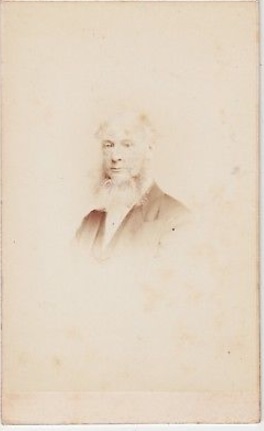
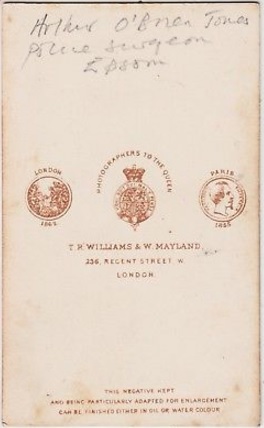
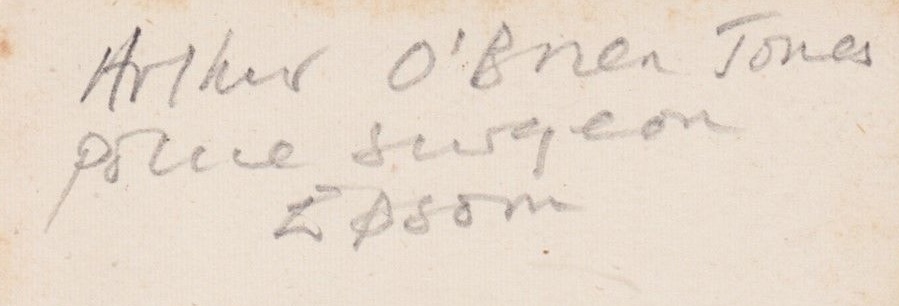
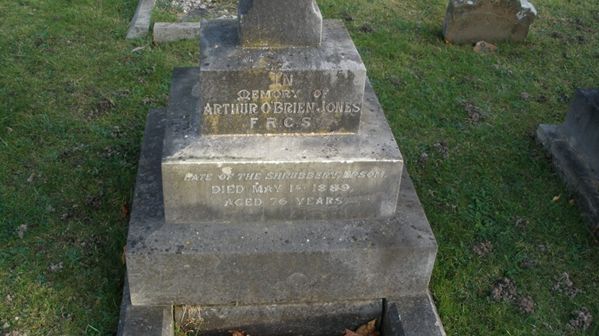
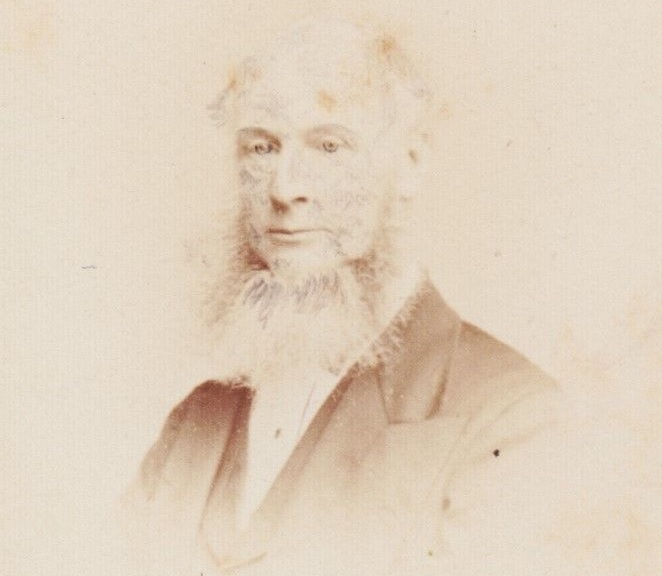
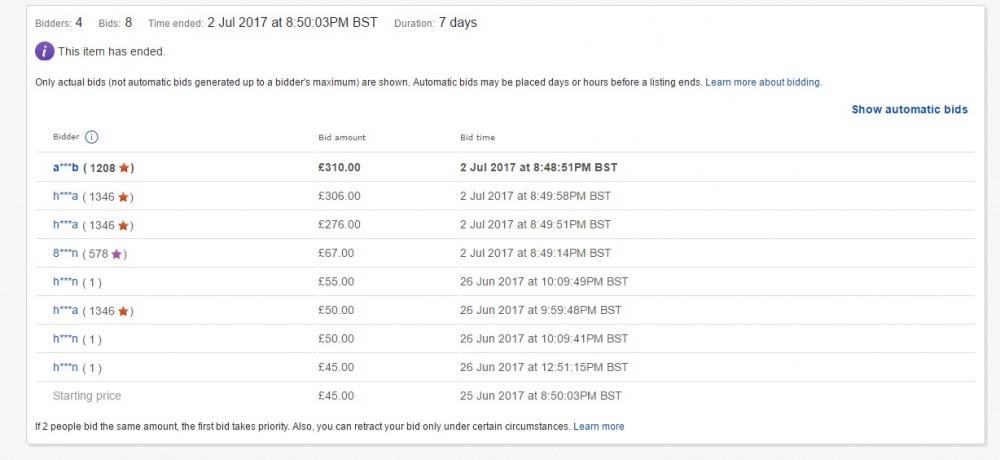


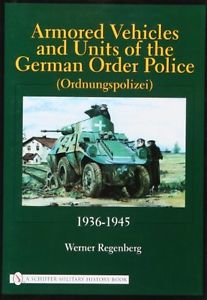
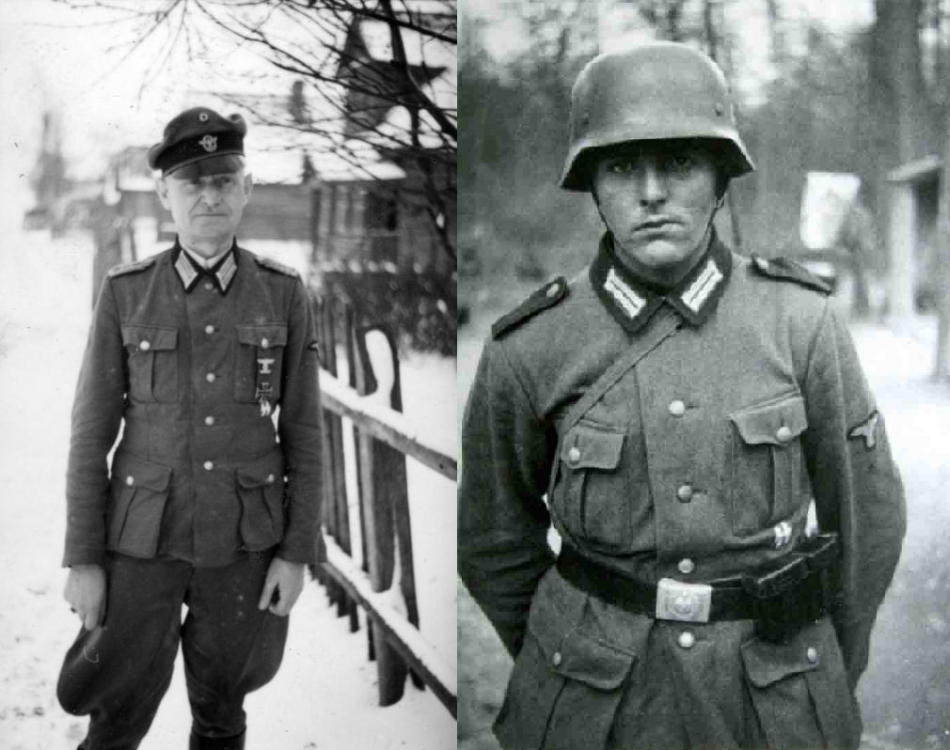
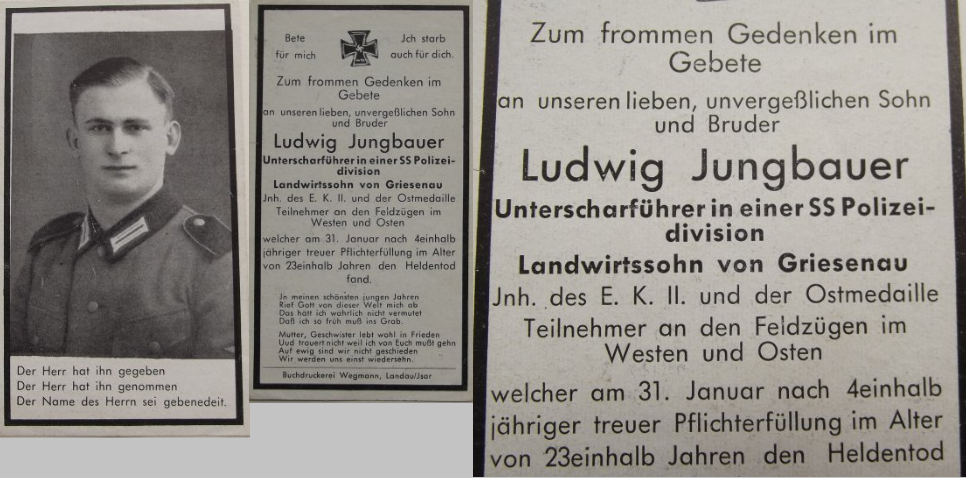
Dr Arthur O'Brien Jones Police Surgeon V Division
in Great Britain: Mervyn Mitton's British & Colonial Police Forces
Posted
Glad you found it of interest, especially as a former bobby from the patch.
I have tried to research the four police officers named in the newspaper reports, although I was able to find PC 269V Joseph Russell on the 1841 census other than that I have been unable to find any service details about them, as they served too far back in the mists of time.
I was however able to find this out about Epsom which might also be of interest.
With the extension of the Metropolitan Police district in 1839, Epsom formed part of V or Wandsworth Division. A police document in the Office for National Statistics shows in V Division, there were six PCs living in a private house in Epsom. A Mounted Sergeant supervised Morden, North Cheam, Malden, Ewell and Epsom.
Another possible line of research is with the two miscreants James Phipps and John Ratcliffe from the 89th, which I am currently looking into.
With regards to the 1919 riot the Canadians were involved in a similar incident in Kinmel Camp North Wales.
http://news.bbc.co.uk/1/hi/wales/7923380.stm